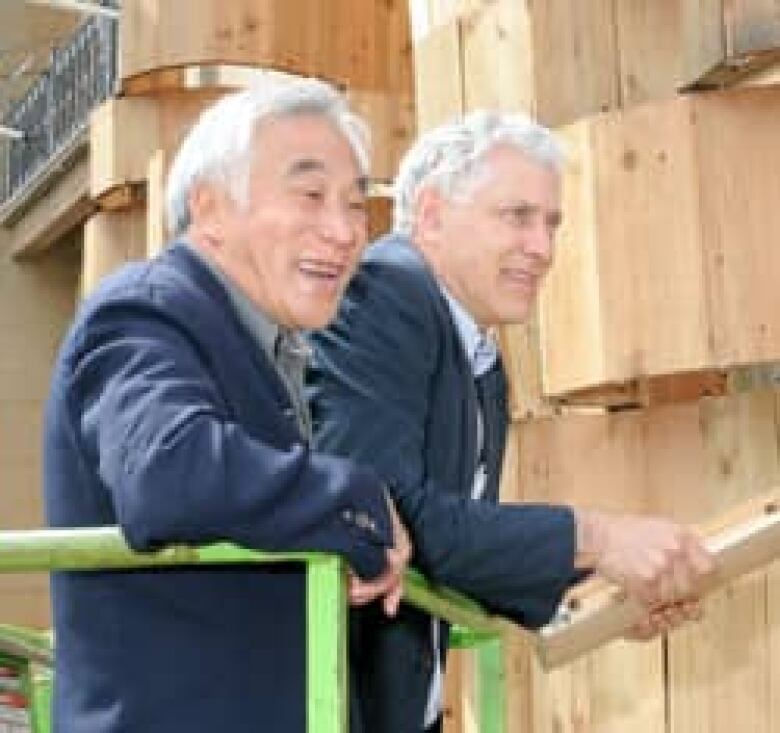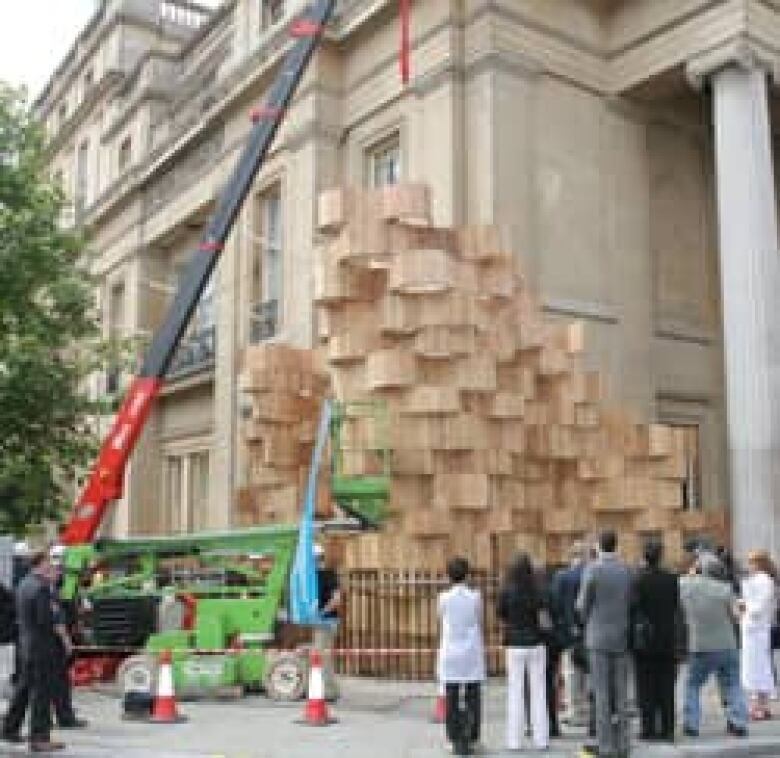Vancouver's architectural style in spotlight at London exhibit

Vancouverism West Coast Architecture and City Buildingcelebrates the work of Arthur Erickson, the Canadian architect known for his modernist structures, and his accolytes.
Vancouverism describes thepractice of designing higher, thinner towers to provide so-called "view corridors" while still accommodating as large a population as possible.
Erickson first sketched out the idea more than half a century ago, says architecture critic and curator Trevor Boddy.
"Arthur with his chutzpah, as an ambitious architecture prof at [University of British Columbia], did this amazing design for the Community Arts Council," Boddy told CBC News.
"It was called Project 56. This sketch showed a 50-, 60-, 70-storey soaring downtown and West End Vancouver. It was a sketch literally a half-century ahead of itself.In my view, that sketch by Arthur Erickson invents the idea of Vancouverism."
Project 56 never got built as Erickson designed it, but his 1970s Robson Square development won praise for incorporating gardens, government offices, law courts and an art gallery, a combination of uses that has become common in West Coast architecture.
The trend of high-density neighbourhoods that make the most of a little spaceis enforced by Vancouver's geography, Boddy said.
The city is jammed between the mountains, the American border, the Georgia Strait and the best farmland in North America.
"By the mid-1960s, Vancouver's West End was the highest-density neighbourhood in all of the West Coast of North America," he said.
American planners, developers and architects took a look at what was happening and coined a term for it Vancouverism.
"What we're doing here is so unusual in the scale of other cities that they started talking about Vancouverizing," Boddy said.
Youngerarchitects continue the style

Cheng's design for Spectrum, which includes 40-storey condo towers atop a big box Costco store, is on display at the London show, which is in Canada's high commission at Canada House.
Thom and Erickson frequently work with StructureCraft, which is recognized as a leader in structural uses of sustainably harvested B.C. engineered wood.
A design by Thom that wraps Canada House in a 61-metre-long, eight-metre-high wooden wall will highlight this technology.
In itslocation next to the National Gallery on Trafalgar Square, the cedar block wall could be seen by a million people a month, Boddy said.
"Some people think it's a Coastal Salish basket because it's woven of strings of cedar wrapping around the corner of Canada House.These are blocks of cedar drilled and then beaded like a necklace onto cables," he said.
Also on display will be Fast + Epp's design for the Vancouver-Whistler 2010 Speed Skating Oval, which also features wood construction.
The 2008 London Festival of Architecture is a month-long festival focusing attention on buildings and streetscapes, and featuring work by architects such as Daniel Liebskind, Cesar Pelli and Rem Koolhaus.
The Vancouverism exhibition is scheduled for Paris this fall, and then will be shown in other parts of Europe and Asia. It couldreturn to Vancouver for the Olympics in January and February 2010.
With files from Paul Grant












_(720p).jpg)


 OFFICIAL HD MUSIC VIDEO.jpg)
.jpg)



























































































